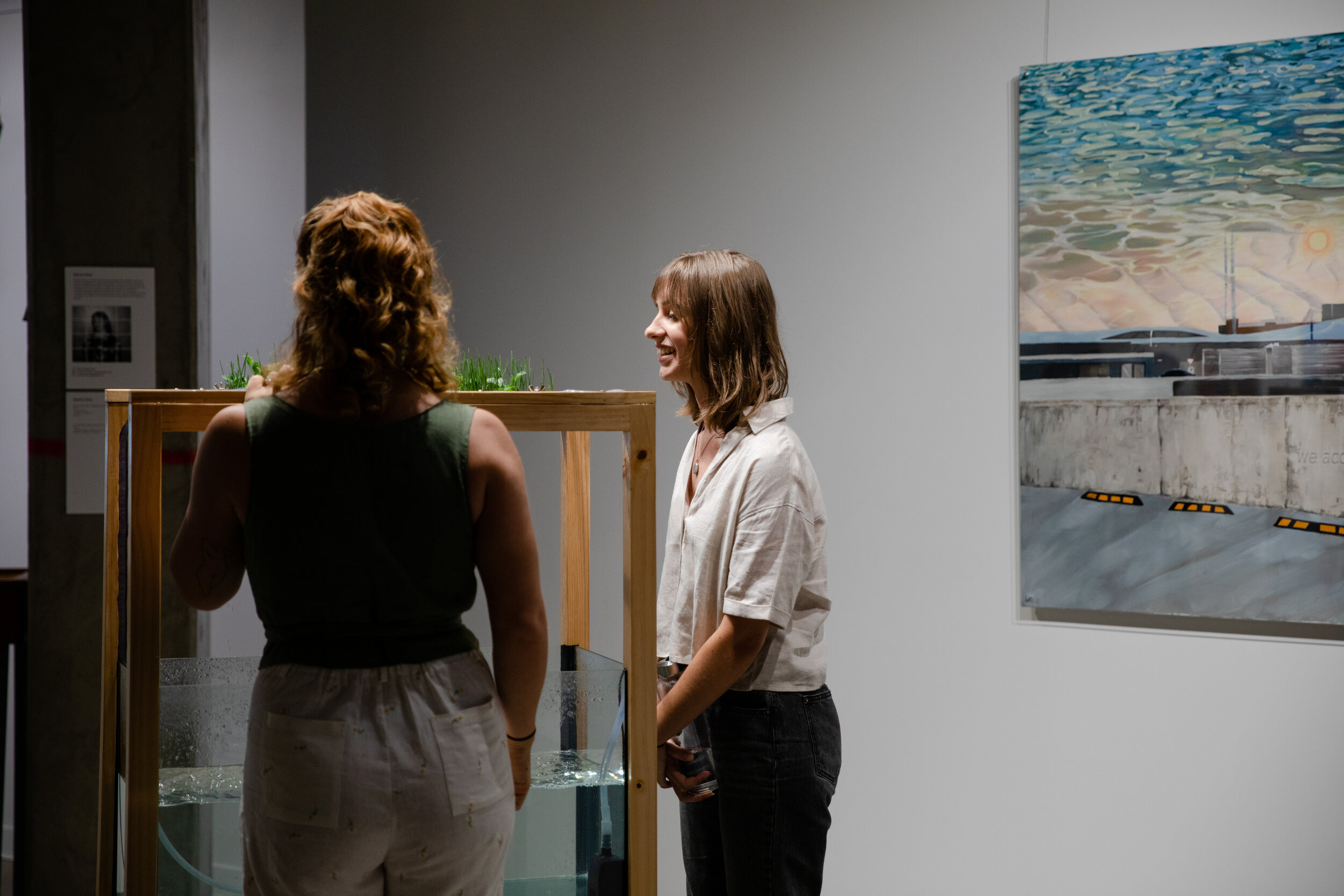
Artist Statement
Martina’s practice aims to re-conceptualise nature in an anthropogenic future. The Anthropocene is a geological time period where changes in ecosystems, biodiversity and natural resources are caused directly or indirectly by human influence. Technology has determined our relationship with nature in the past, but how will it continue to restructure nature in the future?
The combination of installation, image and text combine to place the audience in a narrative of the future. The sunburnt sky and bleached buildings are subdued by the soft ripples of watery reflections, presenting an ominous sense of our city being underwater. We view this through a perspex pane, representing the window which may become our only protection from the outside world. A shallow carving in the perspex casts a shadowed proposition: we accidentally changed the world. This statement implies that all of humankind is responsible, while offering a moment of reflection. How has the world changed? What changes are yet to come?
The materials for the installation deliberately look compartmentally designed from first glance. However upon closer inspection the carved trough which hold the clear tubing is reminiscent of river systems and termite tunnels. The glass water tank is faintly tainted with calcium residue, creating an organic patina of unpredictable shapes. The wheatgrass has a mind of its own and sprouts at different rates, uncertain about being suspended in the air.
Even with its confines, organic materials express themselves and corrupt the glistening dream of industrial refinement. It is often said that Mother nature always has the last word, however with human behaviour quickly becoming the defining feature of nature, who really has the last say?









